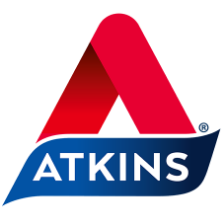- Home►Get inspired►Articles►High Protein Low Carb Foods
High Protein Low Carb Foods


Scroll directly down to

Protein is an important part of any diet. With so many protein-rich foods also low in carbs, it’s really easy to incorporate this essential nutrient into your Atkins weight loss plan.
However, don’t be misled into thinking that Atkins is a ‘high protein’ diet. We recommend moderate amounts of protein with each meal, e.g. 115-175g chicken, meat or fish, or two eggs.
Whether you are just starting out in the Induction Phase or have progressed to Maintenance, high protein foods are both satisfying and filling. As a result, consuming these foods is a good way to make sure you won’t go hungry between meals and reach for high carb snacks.
The good news is that you probably already eat a lot of high protein, low carb foods. In fact, it’s possible that many of them are already a key ingredient in your favourite dishes. Let’s take a look at some examples:
Start on Atkins today and receive support, tips and meal plans for free!
Protein and New Atkins
Meat and fish are a great addition to any low carb diet. One of the biggest challenges people face when they begin a new diet is keeping their meals varied.
This needn’t be a problem with New Atkins, where you can include all kinds of meat and fish in your meal plans, including:
- Chicken
- Turkey
- Pork
- Beef
- Lamb
- Salmon
- Tuna
- Cod
- Prawns
- Crab
These can be eaten during any phase of your diet, although they should of course be consumed in moderation. You should eat until you feel full, and with protein-rich foods this is quite easy to achieve.
What if I don’t eat meat or fish?
New Atkins can easily be followed by vegetarians, and there are plenty of protein-rich foods that don’t contain meat or fish. For example:
- Eggs
- Cheese
- Almonds
- Walnuts
- Peanut Butter
- Tofu
However, it should be noted that not all of these can be eaten during the Induction Phase. For example, nuts should generally be avoided until Phase 2 (Ongoing Weight Loss). If you are vegetarian, you should start in Phase 2 so you can incorporate these foods from day one.
Once you progress to Phase 3 (Pre-Maintenance), you can start to introduce an even wider variety of high protein foods, such as beans and pulses. The reason these foods are only suitable from Phase 3 onwards is that they do contain slightly more carbs. As such, they should only be reintroduced once you have some idea of your carb tolerance, i.e. how much you can eat without gaining weight.
Benefits of a low carb diet
There are so many reasons to adopt a diet that is higher in protein and low in carbohydrates.
Protein is great for muscle building and repair, while it also provides lasting energy for the body. Atkins allows you to burn fat for energy instead of carbs, but protein will prevent any muscle loss and help to keep your metabolic rate ticking over. Put these two factors together and you’re well on your way to achieving your weight loss goals.
The combination can benefit everyone, but is particularly useful as part of a diet where the goal is long term weight control or weight loss.
Long term, sustainable weight loss
Many diets will try to convince you that cutting fat and calories is the way to go. These fad diets emerge all the time, and many of them will only result in short term weight loss.
However, evidence has shown time and time again that people attempting these diets end up feeling hungry and unsatisfied by their meals. This leads them to eat too much in an effort to satisfy their cravings, and any weight they have lost soon piles back on. Often, the dieter will end up heavier than when they started.
High protein foods are ideal for filling you up and preventing the kind of cravings that so often leads to low fat diets not working.
The combination of higher fat intake, moderate protein and low carbs (except vegetables) is the perfect path to weight loss, maintenance and good health.
Achieve your goals with Atkins
Rather you would like to lose weight or to feel fit, Atkins will help you to achieve your goals!
Join now
